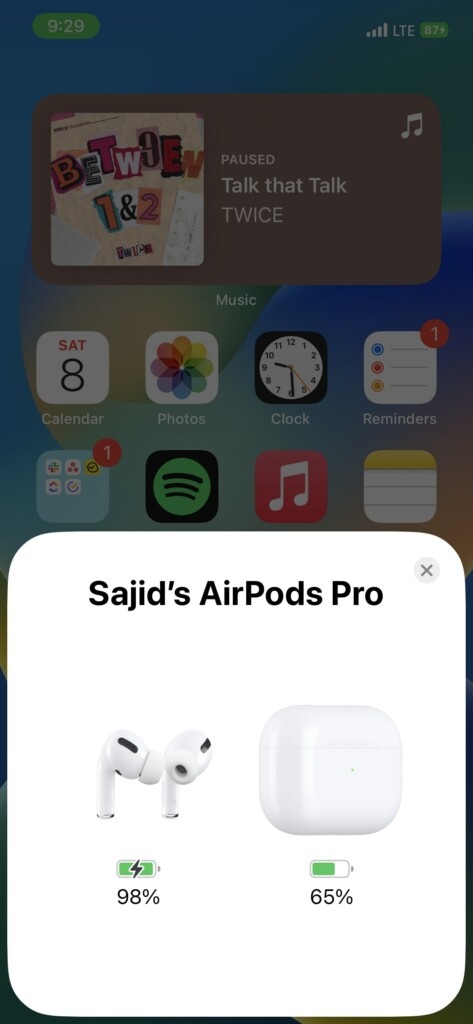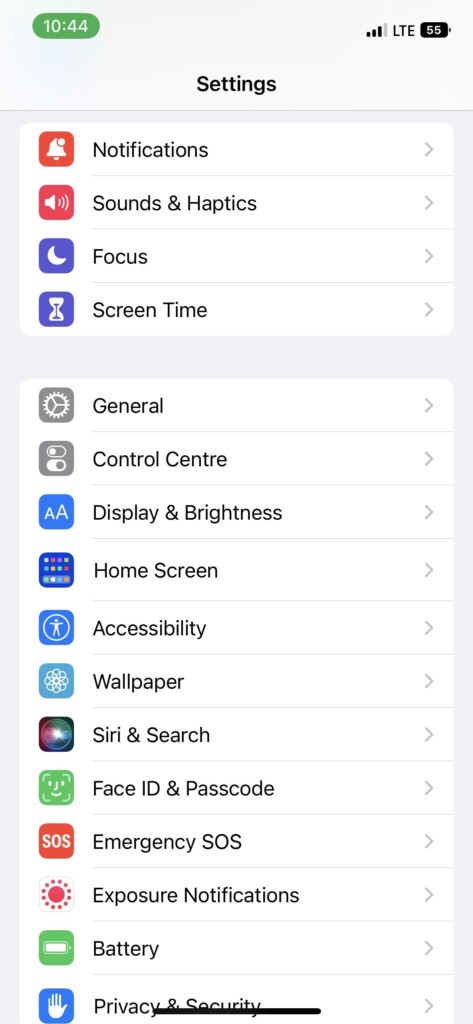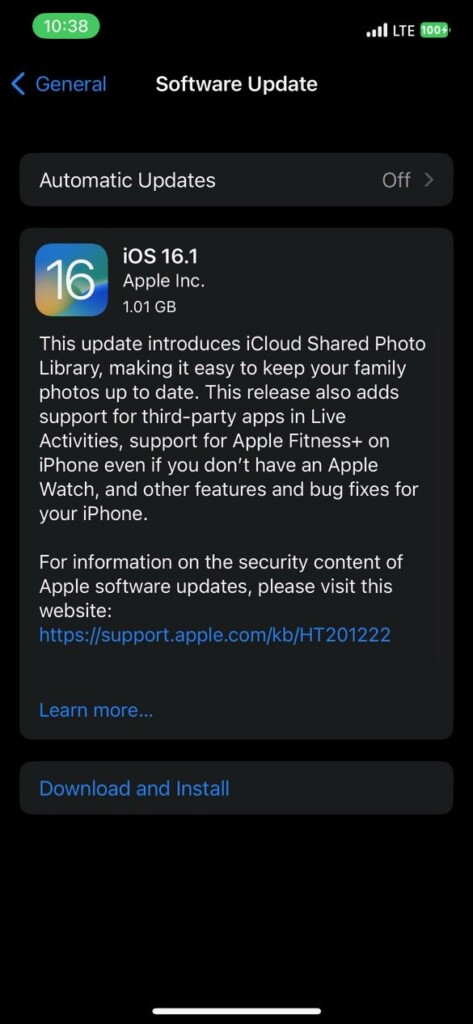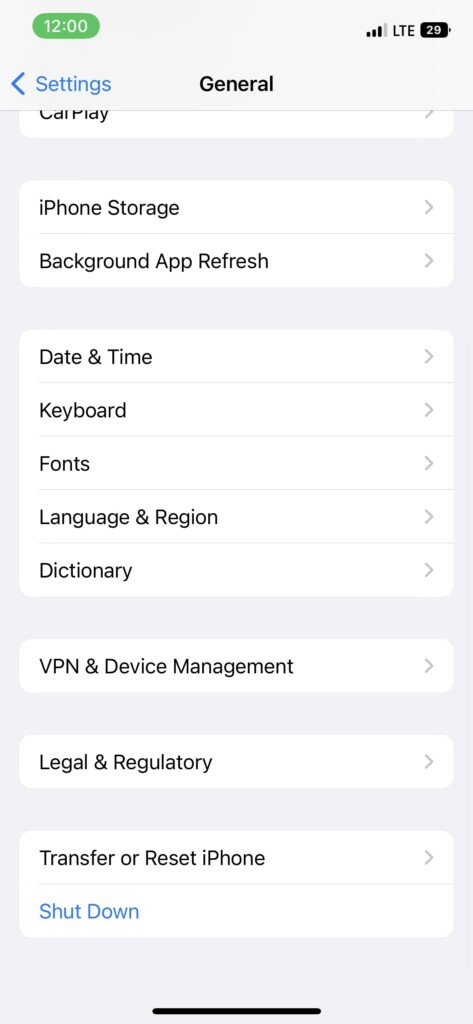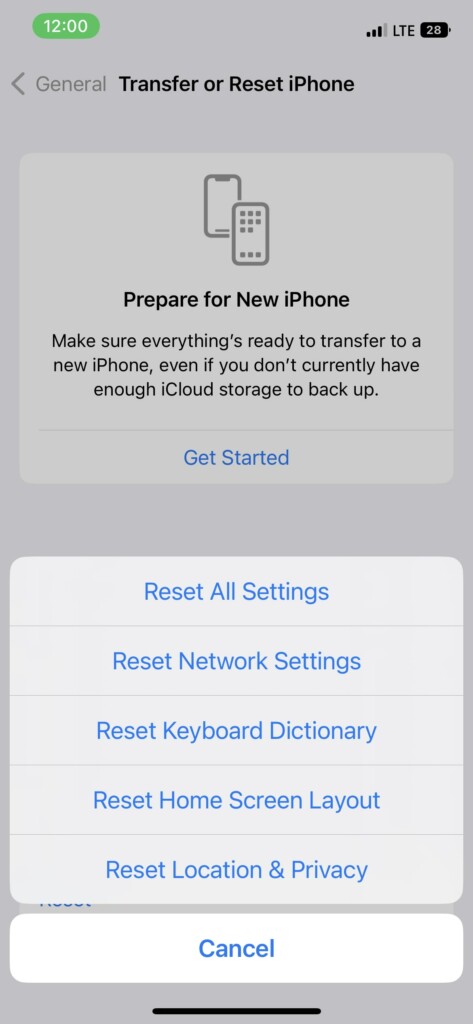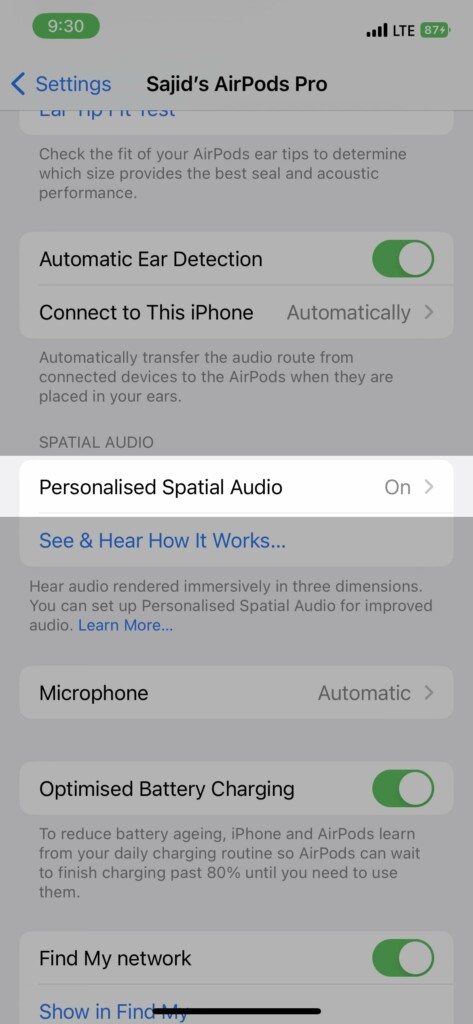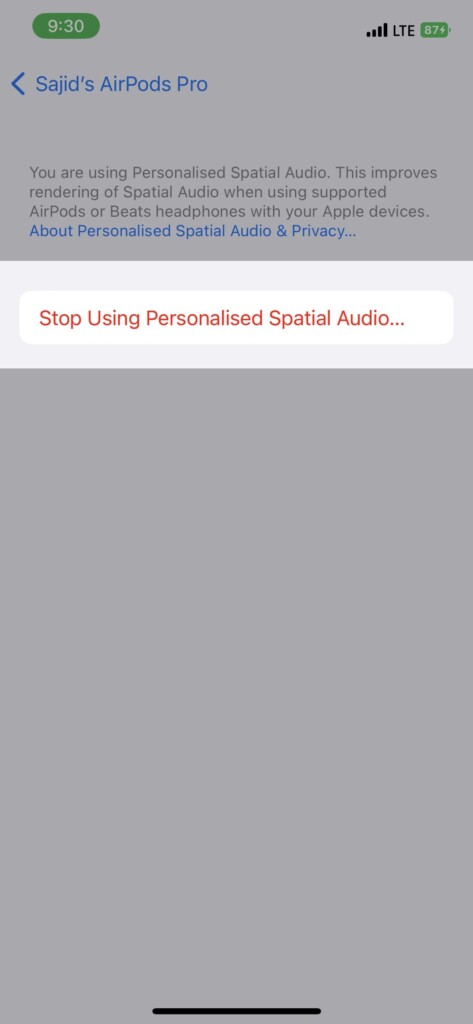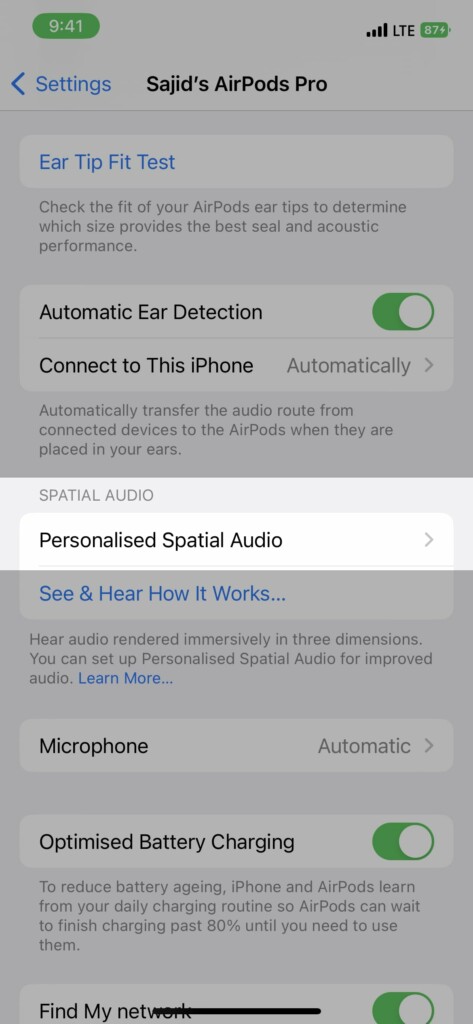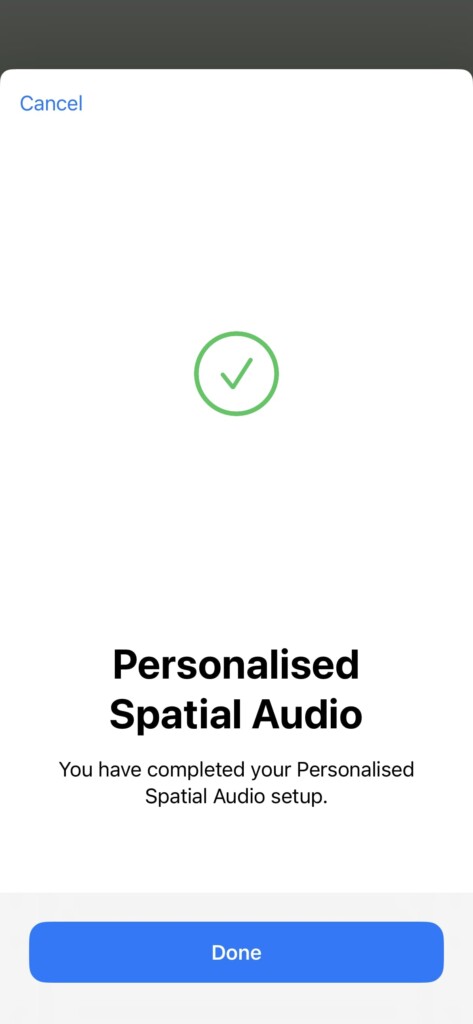1. Check if your device supports Personalized Spatial Audio
To set up Personalized Spatial Audio in the first place, you’ll need to have an iPhone running on iOS 16 with the TrueDepth Camera system. Once set up, you can use it on other devices like iPad, Mac, Apple Watch, and Apple TV. Additionally, you’ll need a pair of AirPods 1st generation, AirPods 2nd generation, AirPods 3rd generation, AirPods Max, and Beats Fit Pro. Finally, you’ll need an app that supports Spatial Audio, like Apple Music, Netflix, Apple TV+, FaceTime, and others. Once you’ve all the requirements up and running, and if Personalized Spatial Audio is still not working, follow the other troubleshooting steps to fix this issue.
2. Update Your AirPods or Beats Fit Pro’s Firmware
To use the latest features like Personalized Spatial Audio, your AirPods must run on the latest firmware. AirPods’ Firmware updates are automatic, and it updates in the background. You can check the latest firmware version available for your AirPods or Beats Fit Pro on the Apple Support website. Compare the latest firmware version to your AirPods firmware and see if they are on the newer version. Here’s how to check for your AirPods firmware version on your iPhone.
- Connect your AirPods to your iPhone.
- Open Settings on your iPhone.
- Select the connected AirPods/Beats Fit Pro option.
- Scroll down and check the text next to Version. That’s your current firmware. If the latest and your AirPods’ firmware don’t match, you must wait for the AirPods to update in the background automatically. Check the firmware version once in a while to see if it got updated.
3. Update Your iPhone to The Latest iOS version
If you do not see the Personalized Spatial Audio on your AirPods or Beats Fit Pro, even with compatible hardware, you might need to run the correct iOS version. Check for any new updates on your iPhone. Here’s how to do it if you don’t know.
- Open Settings on your iPhone.
- Go to General > Software Update. Please wait for it to check for the latest updates.
- Tap Download and Install if there’s an update available. Once downloaded, your device will restart and install the latest iOS version. Connect your AirPods or Beats Fit Pro to see if the Personalized Spatial Audio option is available. If it isn’t, check the following troubleshooting steps.
4. Toggle Bluetooth Off and On
Since the AirPods or the Beats Fit Pro rely on a Bluetooth connection to connect with your iPhone, toggling it on and off might fix it on your device. Here’s how to turn off and turn on Bluetooth on your iPhone.
- Go to Settings on your iPhone.
- Select the Bluetooth option.
- Turn off the toggle next to Bluetooth and wait for 10-15 seconds.
- Turn on the Bluetooth toggle again. Try to see whether the Personalized Spatial Audio option got fixed. If not, try the following solutions on this list.
5. Reset Network Settings on your iPhone
Bluetooth is one of many connectivity options available on an iPhone used by your AirPods to connect with your iPhone. Some issues with your iPhone’s network settings might affect Bluetooth. So it’s best to reset network settings on your iPhone. Here’s how you can do it on your iPhone.
- Open Settings on your iPhone.
- Select General > Transfer or Reset iPhone.
- Tap Reset and then Reset Network Settings. Doing this will reset your Wi-Fi networks and passwords, cellular settings, and VPN and APN settings. Check whether the Personalized Spatial Audio feature is working or not. If it isn’t, follow other solutions in this guide.
6. Restart Your iPhone
Typically, you may experience minor bugs on your iPhone. Restarting your iPhone might fix these bugs. However, restarting your iPhone is different on iPhone with the home button and Face ID. So that you know – the following instructions will show you how to restart your iPhone.
iPhone with Face ID
- Hold the side button and any of the two volume buttons until the Power Off slider appears.
- Drag the slider from left to right and wait for 30 seconds.
- Press and hold the side button until the Apple logo appears.
iPhone with Home Button
- Press and hold the side button until the Power slider appears.
- Drag the slider from left to right and wait for 30 seconds.
- Press and hold the side button until the Apple logo appears. Once your iPhone restarts, could you check whether the issue with Personalized Spatial Audio got fixed? If it hasn’t, try other methods on this list.
7. Rescan Your Face and Ears for Personalized Spatial Audio
While setting up Personalized Spatial Audio, it’ll need a scanning of your face and ears. However, you might have set it up when you didn’t have adequate lighting. On a second note, you might have set it up during the beta phase, which isn’t the best time, but now that iOS 16 is stable, try setting it up again. Here’s how to redo your Personalized Spatial Audio setup.
- Connect your AirPods or Beats Fit Pro to your iPhone.
- Open the Settings app on your iPhone.
- Open the connected headset settings on your iPhone.
- Scroll down and select the Personalized Spatial Audio option.
- Tap on the Stop Using Personalized Spatial Audio option.
- Go back and select Personalized Spatial Audio → Personalized Spatial Audio.
- Follow the on-screen instructions to scan your face and ears. Once your face and ears get scanned and the setup finishes, the Personalized Spatial Audio might start working on your iPhone. If it still doesn’t, try the following troubleshooting method to fix the issue.
8. Reconnect Your AirPods
If none of the methods work for you, you should try reconnecting your AirPods to fix the issue. Here’s how you can reset your different compatible AirPods.
AirPods 3, AirPods Pro, and AirPods Pro 2
- Place your AirPods in their charging case and close the lid.
- Wait for a few seconds and open the lid of your AirPods.
- Go to the AirPods’ settings on the iPhone’s Settings app.
- Scroll down and tap Forget This Device. Tap Forget This Device again when prompted for confirmation.
- With the lid opened, press and hold the back button on your AirPods until the LED indicator blinks white.
- Go through the setup on your iPhone to reconnect them. Once the setup completes, you can try using Personalized Spatial Audio to check whether it works. If it still doesn’t, move on to the last resort in this guide.
9. Contact Apple Support
If everything on this list fails, your best bet is to reach the nearest Apple Support. They might take your AirPods and iPhone to diagnose and fix the issue. It’ll take around 4-5 days to get it done. On the contrary, if they can’t fix it, they’ll get you a replacement unit if it’s under warranty or Apple Care+.
Conclusion
Personalized Spatial Audio is a great way to personalize Spatial Audio for yourself. However, since it’s a software feature, a few bugs may pop up then and now. If not now, Apple will fix these bugs in its future updates. So keep updating your iPhone to the latest version to eliminate issues like these. If you have any further queries or suggestions regarding this topic, feel free to mention them in the comments below. We will try to address them as early as possible.
